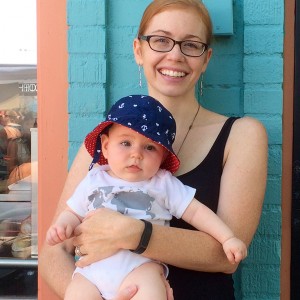I am an artist and illustrator in the process of moving from Denver, CO to Providence, RI. I have two main types of work that make up most of my day: editorial illustration and whiteboard illustration. Editorial work is, by far, my favorite. I'm the sort of person who can get a bit bored with too much routine, so the varied subjects and quick turnarounds keep me on my toes. My work tends to be based in reality for the most part, but what really excites me is the surreality that catches the viewer off guard. I work traditionally - watercolor, acrylic, gouache, ink - but I usually make some tweaks digitally. I suppose that makes me a mixed-media artist. The flexibility to correct errors or change colors digitally is something I am thankful for, but I could never give up traditional media entirely. Nothing feels the same as a pen on paper or a loaded paintbrush in your hand.
Whiteboard illustration is not something I planned to go into, but it is something I now specialize in. It is a field with a pretty steady demand and everyone is looking for someone who has done it before. It's such a challenge because I need to plan out drawings that I am confident I can recreate live and in one take. Also, when it comes time for a video shoot, I've usually got 3-5 people watching me as I draw. No pressure, right? I love being able to get out of my studio and work side-by-side with everyone else who is part of the production. It gives me a chance to collaborate on a level that is usually not necessary or not practical with editorial work.
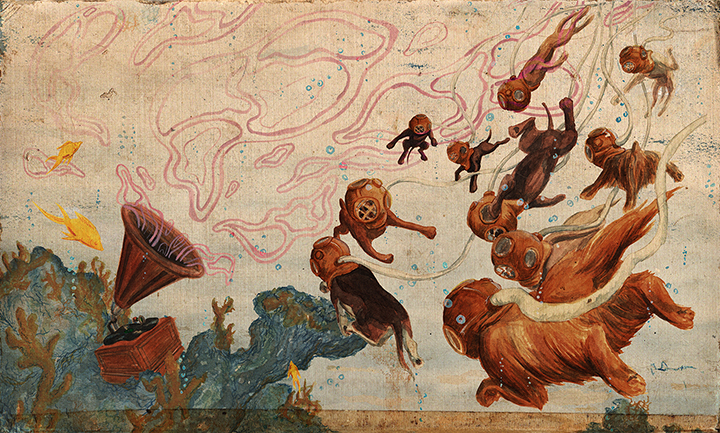
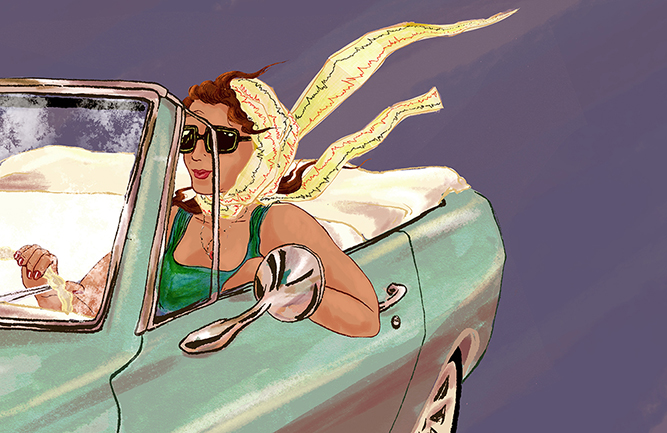
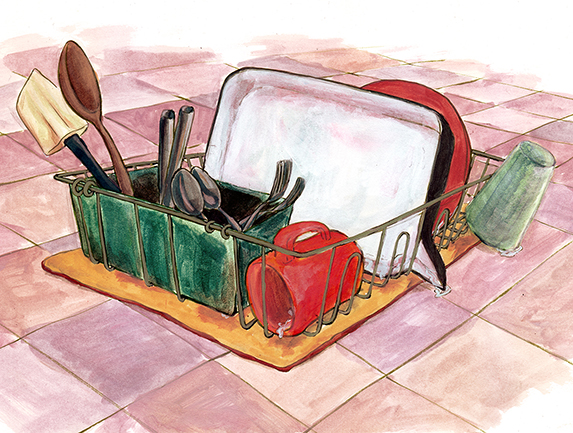
How did you get started in illustration, what is your background?
I got started in illustration a bit late. I've always been an artist from the time I was small, but, growing up in rural Nebraska, I had no idea that illustration was a field I could study. Actually, at the time I went to college a lot of people I studied with thought "commercial art" was, for lack of a better term, "selling out." It was for people who couldn't hack it in the fine art world. Of course, now I can't get enough "commercial art."
I really started to consider illustration about six years ago. I was living in New York City and unhappy in my desk job. The job itself was fine and the people and company were great, but I began to feel as though a typical 9-5 job just wasn't right for me. I've had a wide variety of jobs and didn't feel that my experience was getting me anywhere that was going to make me happy. Until one day I stumbled on Thomas James' "Escape from Illustration Island" podcast. I had already met a woman at work who did some illustration on the side, which seemed like a fulfilling side-job. And then I heard Thomas James' podcast and that is when the seed was planted. I wanted to do something I loved and I wanted to use the talents that I had in the most direct way.
The EFII podcast really helped shape my early career. His interviews with experience illustrators as well as art directors set me on a path to do what I love, but it also set me on the right path to run a business. I learned how to promote myself, what makes a good portfolio, how to work with art directors, and every other facet of being a successful businesswoman and artist.
About the time I was putting together my portfolio, my husband was accepted into a PhD program at the University of Denver. Moving to a new city meant quitting my full-time job, so it was the perfect opportunity to jump head-first into illustration and find out whether or not it was going to be a viable career for me. Five years later, I'm still at it!
Where did you study? Looking back, could you recommend your path for beginners in design & illustration?
I went to Hastings College for my bachelor's degree and studied Studio Art. I was primarily a painter, but was fortunate to have the opportunity to take some less common art classes like glass-blowing. It was a great liberal arts education and I met some incredible people there, including my best friends who were a big part of me moving to New York City. Unfortunately, I wasn't really prepared for a financially viable career when I left college. Sure, I had a four year degree, but I had no idea what I was really qualified for or what I wanted to do. To be fair, this was before the internet as we know it now. Google wasn't a thing yet and we certainly weren't writing research papers based on information we found online.
I don't know if I can fairly answer the question of whether or not I would recommend my path to anyone else. My gut reaction to that question is "no way!" I look at illustrators who are 5-10 years younger than I am, leaving their Bachelor's or Master's programs with incredible portfolios. They've had years to focus only on their work. Years that I didn't have while I was trying to find my way in the world. If I could do it all over again, I would have applied to some of the great art schools in the country and studied illustration from the beginning. Now I fantasize about going back to school for an MFA in Illustration, but I also know that it's not realistic. As much as I want the time to focus on my work, I can't justify the debt that would come along with it, especially now that I have a 7 month old daughter. I also recognize that the life I've lead brought me to where I am. My business is growing and I am so much happier than when I was working a traditional 9-5 job. And, of course, everyone has to find their own path, their own way to success in this business. Even the illustrators who had the opportunity to study illustration specifically will all have a slightly different story about getting their first job or learning how to promote themselves or motivating themselves after they graduated. I would imagine that many "self-taught" illustrators like myself would say that they wouldn't recommend that path, that they might wish they had gone to school, but in the end I think illustration is a career path that finds you, in a way. And now I couldn't imagine doing anything else.
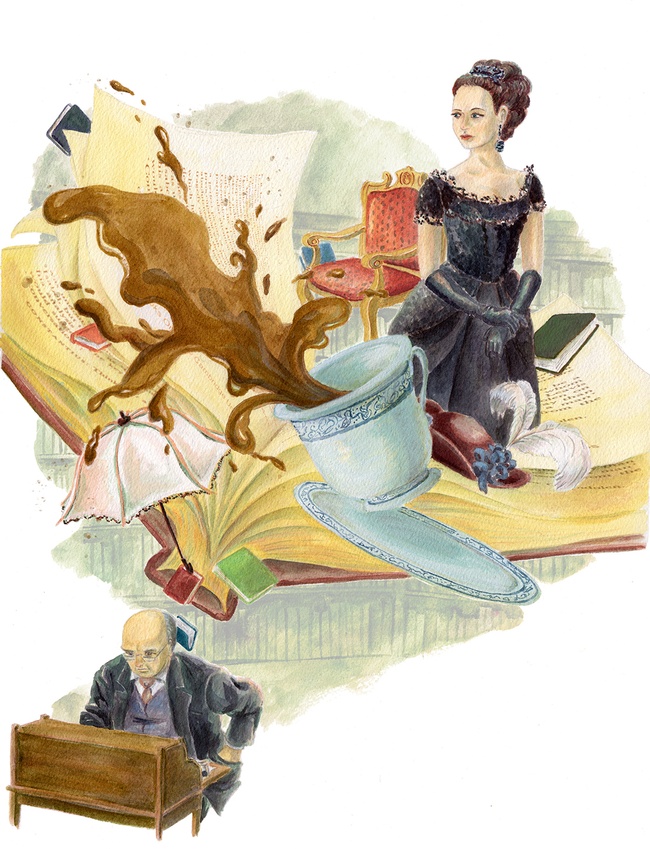
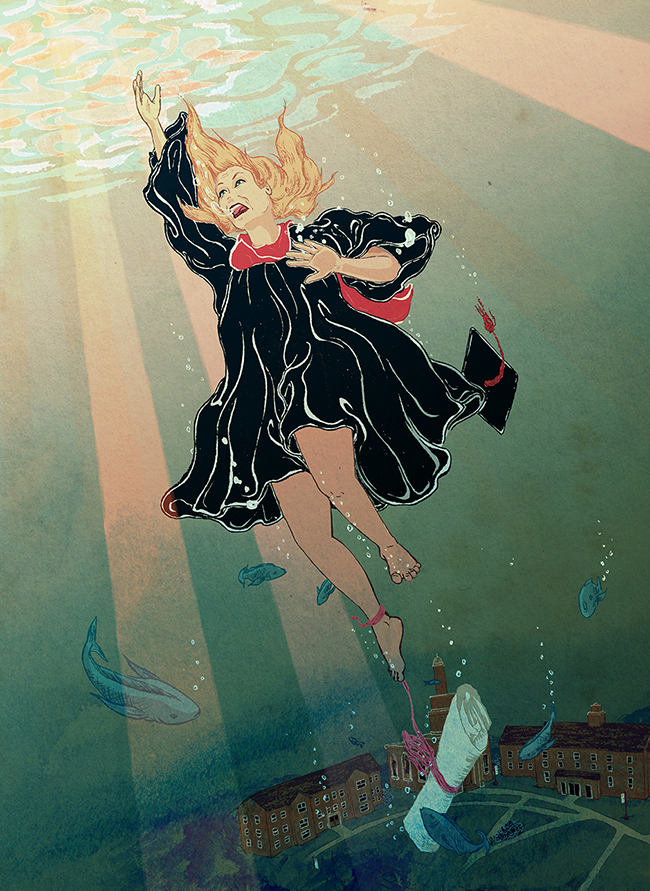
What is a turning point in your professional career?
I'm not sure that I've had a clear turning point in my career. If I look at the bigger picture, the turning point was my decision to pursue illustration that coincided with quitting my full-time job and moving to Denver. Without that opportunity, I doubt that I would have had the courage to say goodbye to a full-time salary and benefits. I also remember meeting the woman at work who did some illustration on the side and talking to her about what it was like to freelance. It seemed scary and it felt as though my work was light years away from being the kind of work that an art director would notice. At that point I started putting one foot in front of the other and I haven't stopped.
What is your ideal work environment? Do you prefer to work in your studio all day long or mix a few activities?
I love my workspace at home. I had a carpenter from my hometown build me a standing desk to my specifications (https://michellekondrich.wordpress.com/2012/01/18/custom-standing-workstation/). It's about 5 feet wide and half of the top of the desk tilts up to 45 degrees to be used as a drawing and painting surface while the other side is stationary for my computer and tablet. It's also got one big drawer underneath that's perfect for storing paper and finished paintings. Being able to stand while I draw and paint has really helped me avoid hunching over as I work, which I have a tendency to do. My "studio" is really just a corner of our living room near the windows. I've never had an entire room to myself, but I'm hoping I will one day. Because my work is at home (with a baby who also lives in that home) and in the middle of everything, it's absolutely crucial for me to get out and work somewhere else when I can. I can't really paint in other locations, but I can certainly send emails, sketch, and work on concepts while I'm out. I'm not terribly picky about where I go; any coffee shop within walking distance will do just fine. Plus, it gives me an opportunity to do a bit of people-sketching while I think.
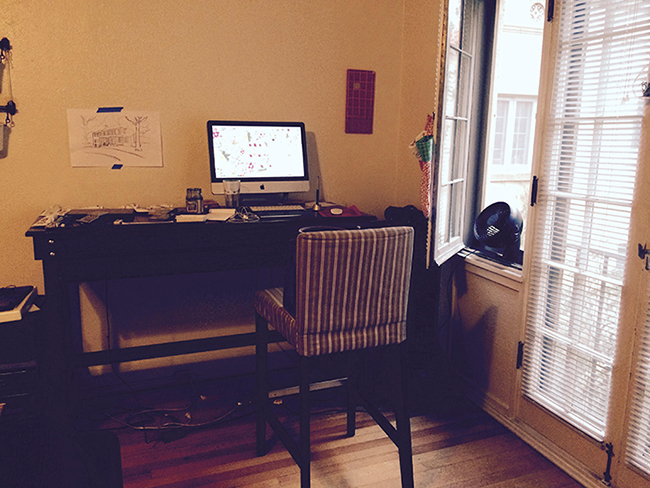
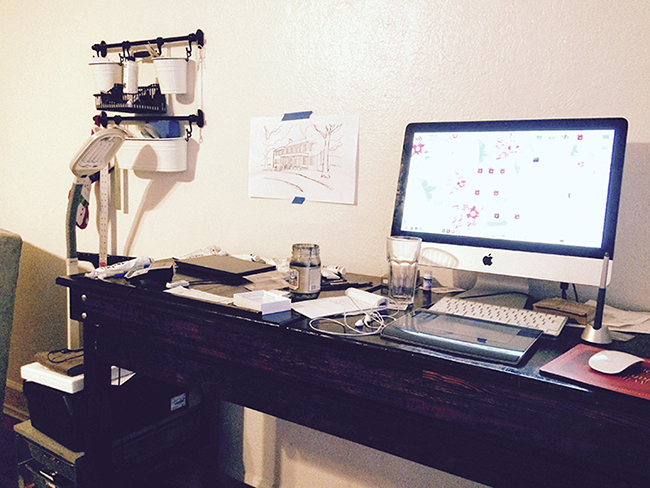
Even on days when I don't leave the house specifically to work, I definitely take breaks and do other things during the day. I love getting out in the morning for a long walk with my daughter in the stroller and during the day I take breaks to read or take care of things around the house or work on a new skill I'm learning (currently: embroidery and the banjo).
Where are your favorite places in your city or outside?
My favorite places in most any city are usually related to the food I love. Here in Denver I think SweetAction Ice Cream (a great local ice cream shop that makes the most amazing flavors, including coconut-based vegan flavors that I often prefer to the real ice cream) and Uncle (a noodle shop whose spicy chicken ramen I can never get enough of). The mountain view here is amazing and a good hike always does my mind and body good. Other than that, anywhere where our friends are gathering is certainly my favorite place. There's nothing like friends sharing food, and enjoying an evening of eating, drinking, and merriment.
Who are the designers and illustrators, colleagues in your city/country or outside you admire most?
The illustrators whose work I admire and look up to the most at the moment are Yuko Shimizu, Victo Ngai, Marc Aspinall, Julia Yellow, and John Hendrix. I have most certainly left some people out, but these are the people whose work jumps to mind immediately. They each have distinctive work that is often so wonderful that I'd like to hang it on my wall regardless of the subject matter. I have a few other illustrators/designers that I admire for their work, but also for their efforts to help emerging artists and give back to the community. Daniel Fishel has created his own independent study course that any illustrator can take. I took the course twice and my work grew by leaps and bounds. He helped me push my concepts and my execution further than I expected. Andy J. Miller is another artist who is currently giving back to the illustration community with his Creative Pep Talk Podcast. It's inspiring, informative, and is often just the kick in the butt I need to shake things up for the good of my career. And, as I mentioned previously, Thomas James and his EFII podcast. He is part of the reason I started illustrating in the first place.
